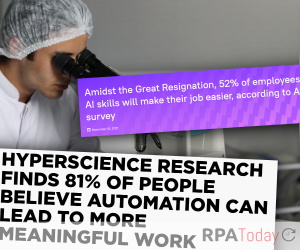
While the consensus around AI and automation are that they will make workers’ lives easier, there remains some misunderstanding by the general public about what automation in the workplace actually is and what it can do, according to the results of two new research papers.
More than nine out of 10 employees indicated in a survey from process intelligence company ABBYY that they waste time searching through documents for information they need to serve customers. More than half (52 percent) of those polled in the ABBYY survey agree that automation software would make their lives easier.
But separate research highlights the need for continuing education among rank-and-file employees on what automation actually is and where it could benefit them. While 63 percent of millennial respondents in Hyperscience’s 2021 Automation Pulse Report believe automation in the workplace is good, especially if used to alleviate certain work burdens, more than half parroted popular misconceptions about the technology. Nearly 20 percent, for instance, said they think automation exists “solely to replace people.”
An interesting gap in employees’ knowledge about automation are the industries in which they believe the technology can be applied. While 70 percent of those polled indicated it would add value to businesses in the transportation and logistics sector and two-thirds said the same about financial services and banking, less than half thought automation could add value for government agencies (45 percent), insurance (47 percent) or healthcare (48 percent).
“Investing in people, to ensure they have a meaningful, engaging work experience, has become a competitive differentiator,” said Charlie Newark-French, Chief Operating Officer at Hyperscience. “Certain technologies, like automation, have far-reaching capabilities that help employees work more efficiently and effectively, while also easing mounting workloads. Embracing these technologies will help enhance the employee experience and enable us to do our jobs better, ultimately making work more human.”

